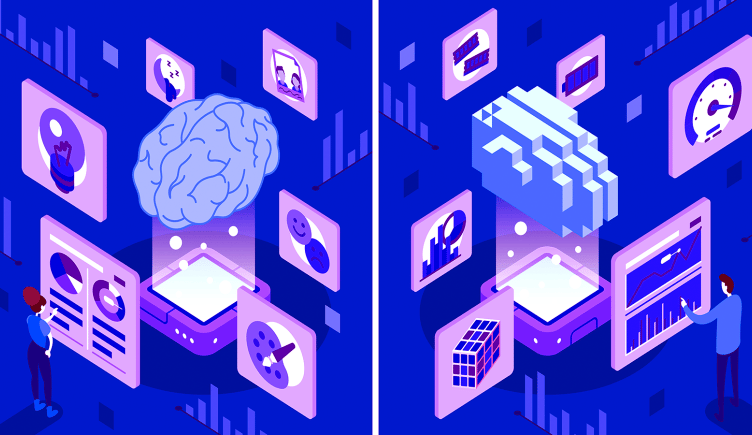Artificial intelligence has two widely accepted classifications — only one of them is actually possible right now.
Copyright: builtin.com – “Strong AI vs. Weak AI: What’s the Difference?”
 What does it mean to be intelligent? Does it mean winning a game of chess? Translating languages? How about recognizing the emotions of a person’s face? Or writing a piece of fiction? As artificial intelligence continues to grow more advanced, the threshold of what can be considered true intelligence continues to get more complicated to define.
What does it mean to be intelligent? Does it mean winning a game of chess? Translating languages? How about recognizing the emotions of a person’s face? Or writing a piece of fiction? As artificial intelligence continues to grow more advanced, the threshold of what can be considered true intelligence continues to get more complicated to define.
Experts insist that these machines aren’t as intelligent as humans — at least not yet. The existence of strong AI, or artificial intelligence that is capable of learning and thinking like humans do, hasn’t arrived yet. But it certainly seems to be on the horizon.
Strong AI vs. Weak AI
While weak AI focuses on automating specific tasks, strong AI is capable of learning and thinking like humans do. Weak AI can outperform humans on the specific tasks it is designed for, but it operates under far more constraints than even the most basic human intelligence. All the AI that’s available today can be considered weak AI. Meanwhile, strong AI does not exist yet.
“I think we’re a lot closer than everybody knows,” James Rolfsen, the global head of data analytics at last-mile delivery startup Rappi, told Built In. “Some people say we’re 20 years out. Some people say we’re 10 years out. I think we’re within 10 years.”
Until then, we will have to settle for the type of artificial intelligence that exists today: weak AI, which operates under far more constraints and limitations than even the most basic human intelligence in order to perfect very specific tasks.
Thank you for reading this post, don't forget to subscribe to our AI NAVIGATOR!
Make no mistake though, weak AI is anything but weak. It has transformed virtually every industry, from healthcare to education to sports. And it is setting a foundation for AI’s potential to not only mimic and match human intelligence, but far exceed it.[…]
Read more: www.builtin.com


Artificial intelligence has two widely accepted classifications — only one of them is actually possible right now.
Copyright: builtin.com – “Strong AI vs. Weak AI: What’s the Difference?”
Experts insist that these machines aren’t as intelligent as humans — at least not yet. The existence of strong AI, or artificial intelligence that is capable of learning and thinking like humans do, hasn’t arrived yet. But it certainly seems to be on the horizon.
Strong AI vs. Weak AI
While weak AI focuses on automating specific tasks, strong AI is capable of learning and thinking like humans do. Weak AI can outperform humans on the specific tasks it is designed for, but it operates under far more constraints than even the most basic human intelligence. All the AI that’s available today can be considered weak AI. Meanwhile, strong AI does not exist yet.
“I think we’re a lot closer than everybody knows,” James Rolfsen, the global head of data analytics at last-mile delivery startup Rappi, told Built In. “Some people say we’re 20 years out. Some people say we’re 10 years out. I think we’re within 10 years.”
Until then, we will have to settle for the type of artificial intelligence that exists today: weak AI, which operates under far more constraints and limitations than even the most basic human intelligence in order to perfect very specific tasks.
Thank you for reading this post, don't forget to subscribe to our AI NAVIGATOR!
Make no mistake though, weak AI is anything but weak. It has transformed virtually every industry, from healthcare to education to sports. And it is setting a foundation for AI’s potential to not only mimic and match human intelligence, but far exceed it.[…]
Read more: www.builtin.com
Share this: